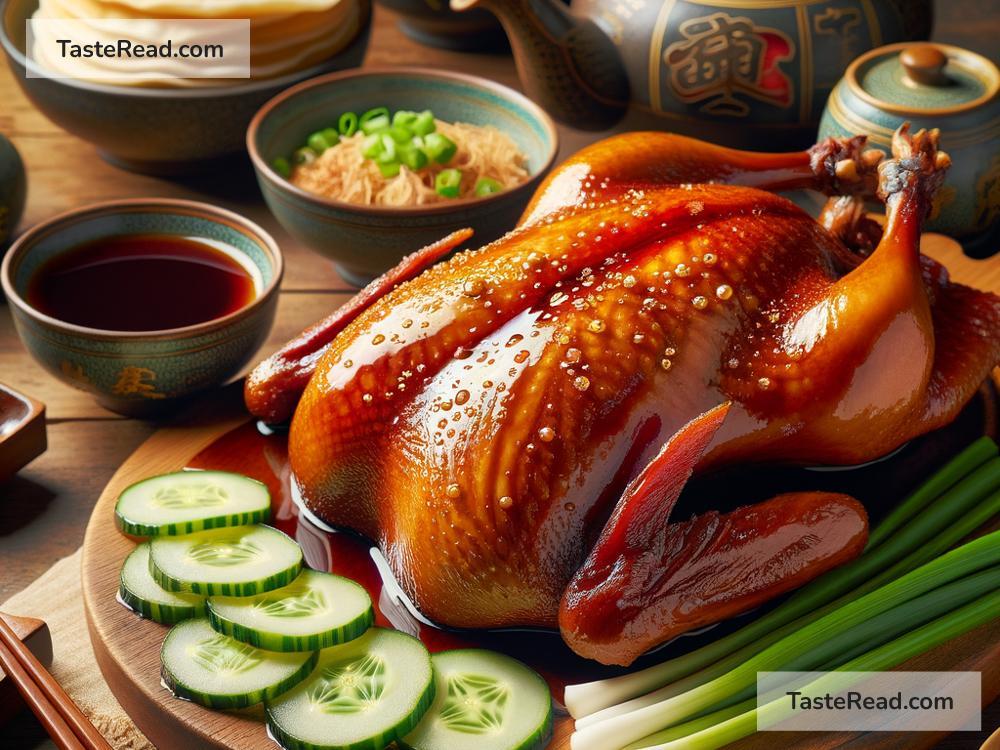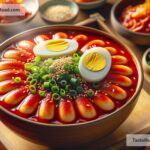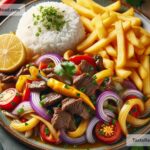Mastering the Classic Recipe of Peking Duck: A Chinese Delicacy
When it comes to iconic Chinese dishes, few can rival the elegance and rich history of Peking Duck. Known for its crispy skin, juicy meat, and flavorful accompaniments, Peking Duck is a favorite for food lovers worldwide. Though it’s often associated with fancy restaurants, this classic dish can also be mastered at home. While it does require time and patience, the results are well worth the effort. In this blog post, we’ll teach you how to make the famous Peking Duck using simple instructions.
What is Peking Duck?
Peking Duck originated in China centuries ago and was a dish reserved for royalty during the Ming Dynasty. Today, it’s considered a staple of Chinese cuisine, enjoyed during special events and family gatherings. Its signature feature is the crispy, golden-brown skin, which is achieved through a unique method of preparation. Peking Duck is typically served with thin pancakes, hoisin sauce, and sliced scallions, ensuring every bite is packed with flavor.
What Makes Peking Duck Special?
The secret to Peking Duck lies in the preparation. Unlike regular roast duck, the skin must be separated from the meat, dried, and cooked until it’s crispy. This process requires attention to detail but is what makes the dish so delicious. The result is a perfect balance between the crispiness of the skin and the tenderness of the duck meat.
Ingredients You’ll Need
Before we start cooking, gather these ingredients:
– 1 whole duck (about 5-6 pounds)
– 2 tablespoons honey
– 2 tablespoons soy sauce
– 1 tablespoon vinegar (white or rice vinegar)
– 5 cups water
– Hoisin sauce (for serving)
– Pancakes or wraps (store-bought or homemade)
– Sliced scallions (green onions) and cucumber strips (optional, for garnish)
Step-by-Step Guide to Making Peking Duck
Cooking Peking Duck takes time, but if you follow these steps, you’ll have a restaurant-quality dish in your own kitchen.
1. Preparing the Duck
Start by cleaning the duck. Rinse it thoroughly under cold water and pat it dry with paper towels. Remove any excess fat inside the cavity. Next, use a sharp knife or a skewer to puncture the skin gently, without cutting into the meat. This will help render the fat and crisp the skin during cooking.
2. Separating the Skin
To achieve Peking Duck’s signature crispy skin, it’s important to separate the skin from the meat. You can do this by carefully inflating the skin using an air pump or similar tool. This step may sound tricky, but it ensures the skin puffs away from the meat during cooking.
3. Applying the Glaze
In a small saucepan, mix the honey, soy sauce, vinegar, and water. Heat the mixture over medium heat until it simmers. Remove it from heat and allow it to cool slightly. Once cooled, pour this glaze evenly over the duck, coating every part of the skin. This glaze will help the duck achieve its beautiful golden-brown color while adding subtle sweetness to the flavor.
4. Drying the Duck
One of the most important steps in making Peking Duck is drying the duck properly. Hang it in a cool, dry place or leave it uncovered in your refrigerator for at least 24 hours. The glaze should form a dry layer over the skin, which is essential for achieving crispiness.
5. Roasting the Duck
Preheat your oven to 400°F (200°C). Place the duck on a wire rack over a roasting pan to allow air to circulate around it. Roast for 45 minutes, then flip the duck and roast for another 30 minutes until the skin is golden and crispy. If you’re using a thermometer, the internal temperature of the duck should reach 165°F (75°C) to ensure it’s fully cooked.
6. Serving the Duck
Once roasted, let the duck rest for about 10 minutes before carving. Use a sharp knife to slice the crispy skin and tender meat into thin pieces. Serve it with warm pancakes, hoisin sauce, and fresh scallions or cucumbers. To assemble, spread a little hoisin sauce on the pancake, add a slice of duck and a few pieces of scallion or cucumber, then roll it up like a wrap. Bite into it and enjoy the explosion of flavors!
Tips for Success
- Pick the right duck: Fresh or high-quality frozen ducks work best. Look for ducks with even fat distribution for better cooking results.
- Practice patience: The drying and roasting process can take time, but a perfectly crispy Peking Duck is worth it.
- Get creative: If pancakes are hard to find, use flour tortillas or lettuce leaves as substitutes.
Final Thoughts
Peking Duck is more than just a dish—it’s a cultural experience and a labor of love. While it may seem intimidating at first, the step-by-step process is approachable with a bit of practice. Preparing this delicacy at home allows you to share the joy of authentic Chinese cuisine with your family and friends. So, whether it’s a special occasion or just a weekend culinary adventure, give the classic recipe a try. Who knows? You might just master the art of Peking Duck and impress everyone at the dinner table. Happy cooking!


